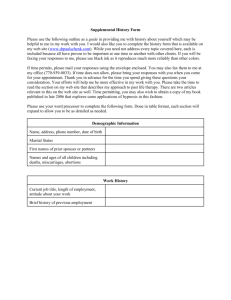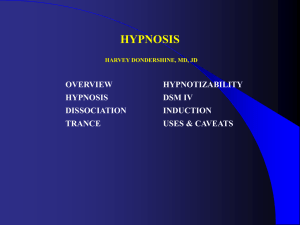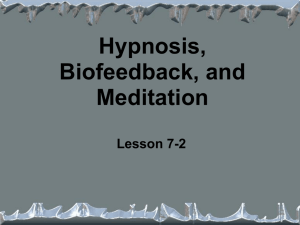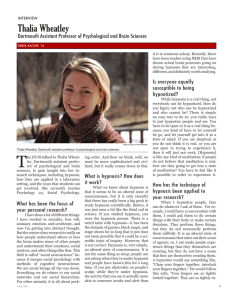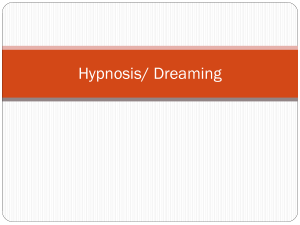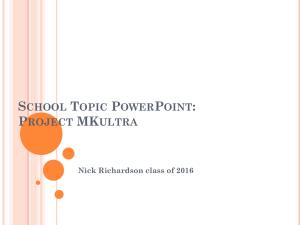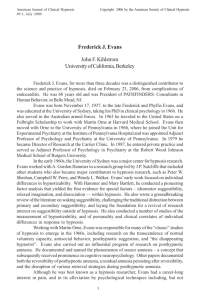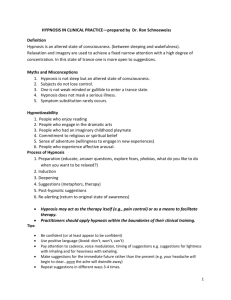Title: Electrocortical activity during deep hypnosis experiences
advertisement
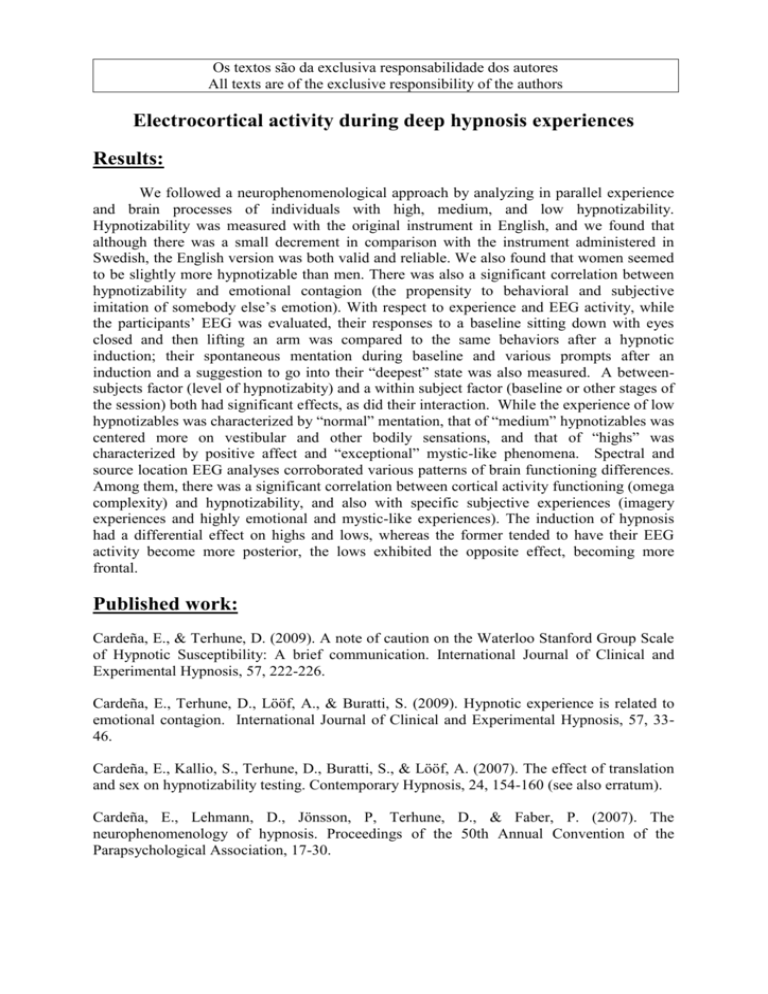
Os textos são da exclusiva responsabilidade dos autores All texts are of the exclusive responsibility of the authors Electrocortical activity during deep hypnosis experiences Results: We followed a neurophenomenological approach by analyzing in parallel experience and brain processes of individuals with high, medium, and low hypnotizability. Hypnotizability was measured with the original instrument in English, and we found that although there was a small decrement in comparison with the instrument administered in Swedish, the English version was both valid and reliable. We also found that women seemed to be slightly more hypnotizable than men. There was also a significant correlation between hypnotizability and emotional contagion (the propensity to behavioral and subjective imitation of somebody else’s emotion). With respect to experience and EEG activity, while the participants’ EEG was evaluated, their responses to a baseline sitting down with eyes closed and then lifting an arm was compared to the same behaviors after a hypnotic induction; their spontaneous mentation during baseline and various prompts after an induction and a suggestion to go into their “deepest” state was also measured. A betweensubjects factor (level of hypnotizabity) and a within subject factor (baseline or other stages of the session) both had significant effects, as did their interaction. While the experience of low hypnotizables was characterized by “normal” mentation, that of “medium” hypnotizables was centered more on vestibular and other bodily sensations, and that of “highs” was characterized by positive affect and “exceptional” mystic-like phenomena. Spectral and source location EEG analyses corroborated various patterns of brain functioning differences. Among them, there was a significant correlation between cortical activity functioning (omega complexity) and hypnotizability, and also with specific subjective experiences (imagery experiences and highly emotional and mystic-like experiences). The induction of hypnosis had a differential effect on highs and lows, whereas the former tended to have their EEG activity become more posterior, the lows exhibited the opposite effect, becoming more frontal. Published work: Cardeña, E., & Terhune, D. (2009). A note of caution on the Waterloo Stanford Group Scale of Hypnotic Susceptibility: A brief communication. International Journal of Clinical and Experimental Hypnosis, 57, 222-226. Cardeña, E., Terhune, D., Lööf, A., & Buratti, S. (2009). Hypnotic experience is related to emotional contagion. International Journal of Clinical and Experimental Hypnosis, 57, 3346. Cardeña, E., Kallio, S., Terhune, D., Buratti, S., & Lööf, A. (2007). The effect of translation and sex on hypnotizability testing. Contemporary Hypnosis, 24, 154-160 (see also erratum). Cardeña, E., Lehmann, D., Jönsson, P, Terhune, D., & Faber, P. (2007). The neurophenomenology of hypnosis. Proceedings of the 50th Annual Convention of the Parapsychological Association, 17-30. Os textos são da exclusiva responsabilidade dos autores All texts are of the exclusive responsibility of the authors Award resulting from the project supported with the present grant: Best research paper on hypnosis (to Etzel Cardeña, Dietrich Lehmann, Peter Jönsson, Devin Terhune, & Pascal Farber), for “The neurophenomenology of hypnosis,” bestowed by Division 30 of APA (American Psychological Association), 2007 Annual Meeting. Researchers’ contacts: Etzel Cardeña, PhD., Thorsen Professor Department of Psychology Center for Research on Consciousness and Anomalous Psychology University of Lund P.O. Box 213 SE-221 00, Lund, Sweden Telephone number: (0)46 46 2228770, Fax (department of psychology): 46 46 222 4209 Email: Etzel.Cardena@psychology.lu.se Webpage: http://www.psychology.lu.se/Personal/e_cardena/ Dietrich Lehmann, Prof. Dr. med., Dr. h.c., The KEY Institute for Brain-Mind Research University of Zurich Email: dlehmann@key.unizh.ch
